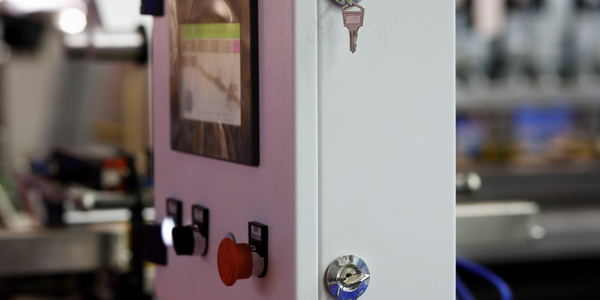
技术
- 自动化与控制 - 人机界面 (HMI)
- 自动化与控制 - 监督控制和数据采集 (SCADA)
- 功能应用 - 远程监控系统
适用行业
- 公用事业
适用功能
- 商业运营
用例
- 远程资产管理
客户
塔科马电力
关于客户
塔科马电力公司是一家为华盛顿州塔科马市及周边地区提供电力的公用事业公司。 Tacoma Power 为 Tacoma、University Place、Fircrest 和 Fife 等城市提供服务,同时也为
挑战
塔科马电力公司位于华盛顿州塔科马市,为 160,000 名电力公司客户提供服务,在四条河流上拥有九个水电设施。公司的一代自动化团队,由三名工程师和一名工程技术人员组成,负责集成化、现代化。该公司有一小部分员工负责监督许多不同的环境,因此希望在虚拟环境中实施其 HMI/SCADA 系统以实现自动化和控制,以优化运营并降低成本。
解决方案
为了制定虚拟化业务案例,Tacoma Power 管理层审查了成本和收益。理由很明确,因为该公司证明了一笔小的前期投资,从长远来看,通过速度、正常运行时间和显着降低风险可以节省成本。在获得执行级别的批准和支持后,Tacoma Power 将虚拟化添加到系统生命周期更换的常规预算中,利用 IT 顾问获得专家建议,并规划了其部署过程。
该公司通过 GE Digital 的 HMI/SCADA iFIX 在其水电和鱼类孵化设施中使用 Microsoft Hyper-V 部署了一个多阶段虚拟化项目。除了可视化和控制之外,Tacoma Power 还实施了 iFIX 以进行趋势分析、故障排除和持续优化。数据收集和管理对于监管报告以及日常运营至关重要。而且,让操作员从远程设备访问 HMI 屏幕对于加快对孵化场相关警报的响应非常重要。
收集的数据
Maintenance Records, Product Lifecycle, Speed, Uptime, Water Usage
运营影响
数量效益

Case Study missing?
Start adding your own!
Register with your work email and create a new case study profile for your business.
相关案例.

Case Study
IoT Solutions for Smart City | Internet of Things Case Study
There were several challenges faced: It is challenging to build an appliance that can withstand a wide range of voltage fluctuations from as low at 90v to as high as 320v. Since the device would be installed in remote locations, its resilience was of paramount importance. The device would have to deal with poor network coverage and have the ability to store and re-transmit data if networks were not available, which is often the case in rural India. The device could store up to 30 days of data.

Case Study
Automation of the Oguz-Gabala-Baku water pipeline, Azerbaijan
The Oguz-Gabala-Baku water pipeline project dates back to plans from the 1970’s. Baku’s growth was historically driven by the booming oil industry and required the import of drinking water from outside of the city. Before the construction of the pipeline, some 60 percent of the city’s households received water for only a few hours daily. After completion of the project, 75 percent of the two million Baku residents are now served around the clock with potable water, based on World Health Organization (WHO) standards. The 262-kilometer pipeline requires no pumping station, but uses the altitude differences between the Caucasian mountains and the capital to supply 432,000 m³/d to the Ceyranbatan water reservoir. To the people of Baku, the pipeline is “the most important project not only in 2010, but of the last 20 years.”

Case Study
GPRS Mobile Network for Smart Metering
Around the world, the electricity supply industry is turning to ‘smart’ meters to lower costs, reduce emissions and improve the management of customer supplies. Smart meters collect detailed consumption information and using this feedback consumers can better understand their energy usage which in turn enables them to modify their consumption to save money and help to cut carbon emissions. A smart meter can be defined in many ways, but generally includes an element of two-way communication between the household meter and the utility provider to efficiently collect detailed energy usage data. Some implementations include consumer feedback beyond the energy bill to include online web data, SMS text messages or an information display in consumers’ premises. Providing a cost-effective, reliable communications mechanism is one of the most challenging aspects of a smart meter implementation. In New Zealand, the utilities have embraced smart metering and designed cost effective ways for it to be implemented. The New Zealand government has encouraged such a move to smart metering by ensuring the energy legislation is consistent with the delivery of benefits to the consumer while allowing innovation in this area. On the ground, AMS is a leader in the deployment of smart metering and associated services. Several of New Zealand’s energy retailers were looking for smart metering services for their residential and small business customers which will eventually account for over 500,000 meters when the multi-year national deployment program is concluded. To respond to these requirements, AMS needed to put together a solution that included data communications between each meter and the central data collection point and the solution proposed by Vodafone satisfied that requirement.

Case Study
NB-IoT connected smart meters to improve gas metering in Shenzhen
Shenzhen Gas has a large fleet of existing gas meters, which are installed in a variety of hard to reach locations, such as indoors and underground, meaning that existing communications networks have struggled to maintain connectivity with all meters. The meter success rate is low, data transmissions are so far unstable and power consumption is too high. Against this background, Shenzhen Gas, China Telecom, Huawei, and Goldcard have jointly trialed NB-IoT gas meters to try and solve some of the challenges that the industry faces with today’s smart gas meters.

Case Study
OneWireless Enabled Performance Guarantee Test
Tata Power's power generation equipment OEMs (M/s BHEL) is required to provide all of the instrumentation and measurement devices for conducting performance guarantee and performance evaluation tests. M/s BHEL faced a number of specific challenges in conducting PG tests: employing high-accuracy digital communications for instrumentation, shortening setup and dismantling time, reducing hardware required, making portable instrument setup, avoiding temporary cabling work and the material waste costs

Case Study
British Gas Modernizes its Operations with Innovative Smart Metering Deployment
The UK government has mandated that smart meters are rolled out as standard across Great Britain by end of 2020, and this roll-out is estimated to create £14 billion in net benefits to the UK in consumer energy savings and lower energy generation demand, according to the Oxford Economics report, “The Value of Smart Metering to Great Britain.” While smart-metering systems have been deployed in many countries, the roll-out in Great Britain is unique because it is led by energy retailers, who have responsibility for the Electricity and Gas meters. The decision to have a retailer-led roll out was made by DECC (Department of Energy and Climate Change) to improve customer experience and drive consumer benefits. It has also led to some unique system-level requirements to support the unique local regulatory model.

_30.jpg)

